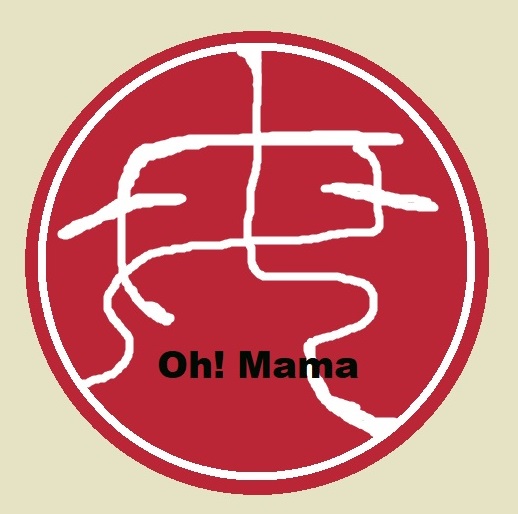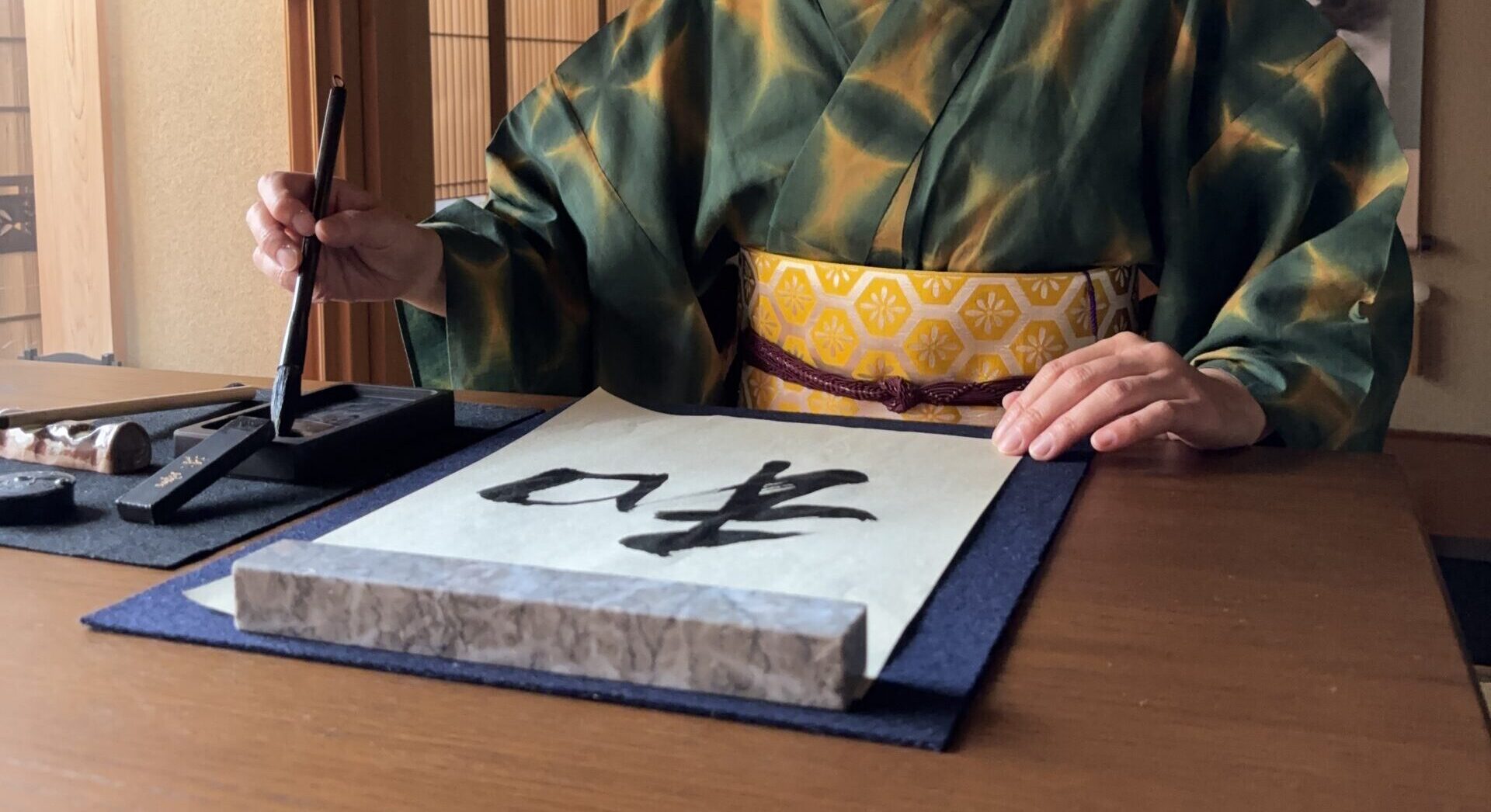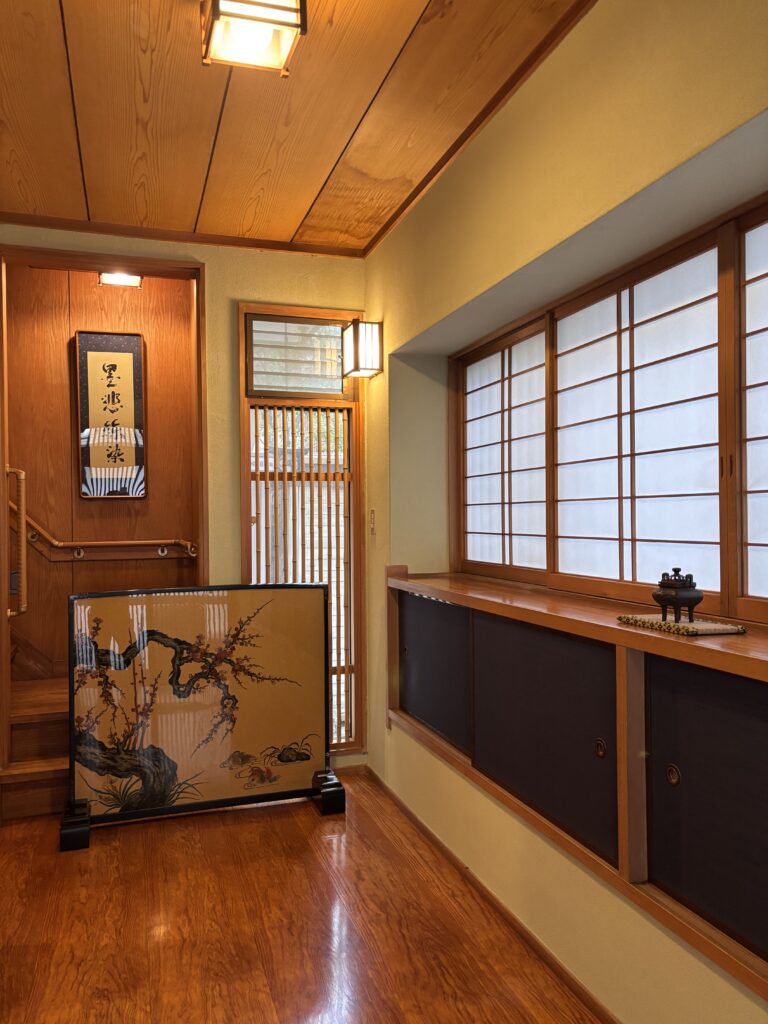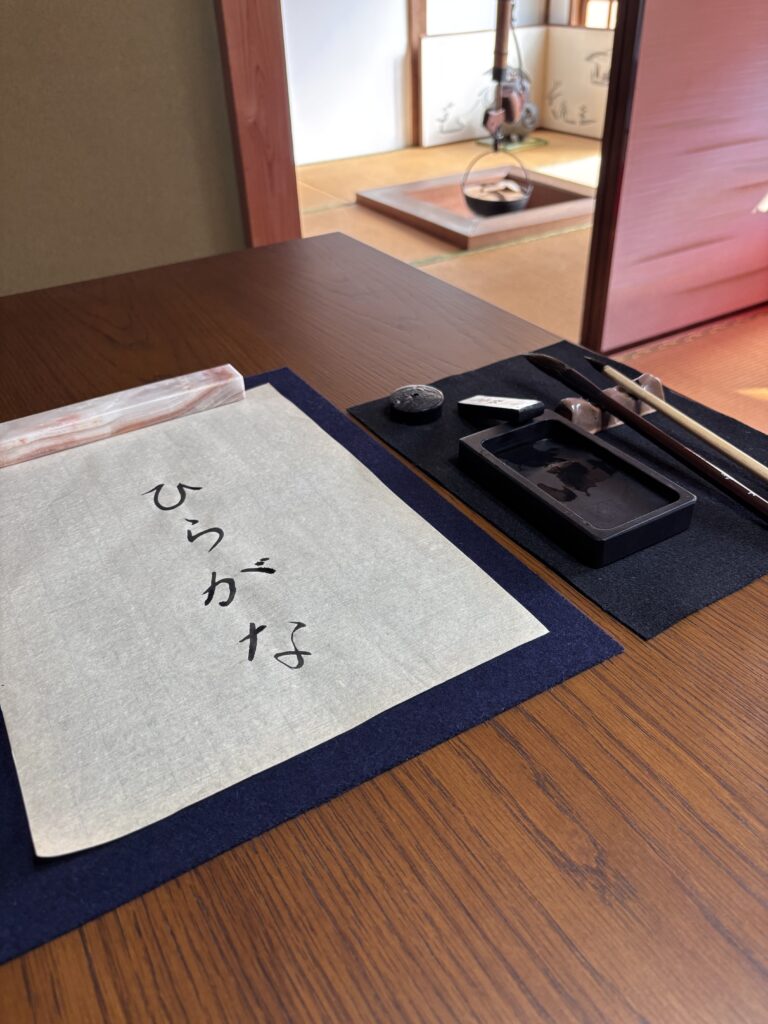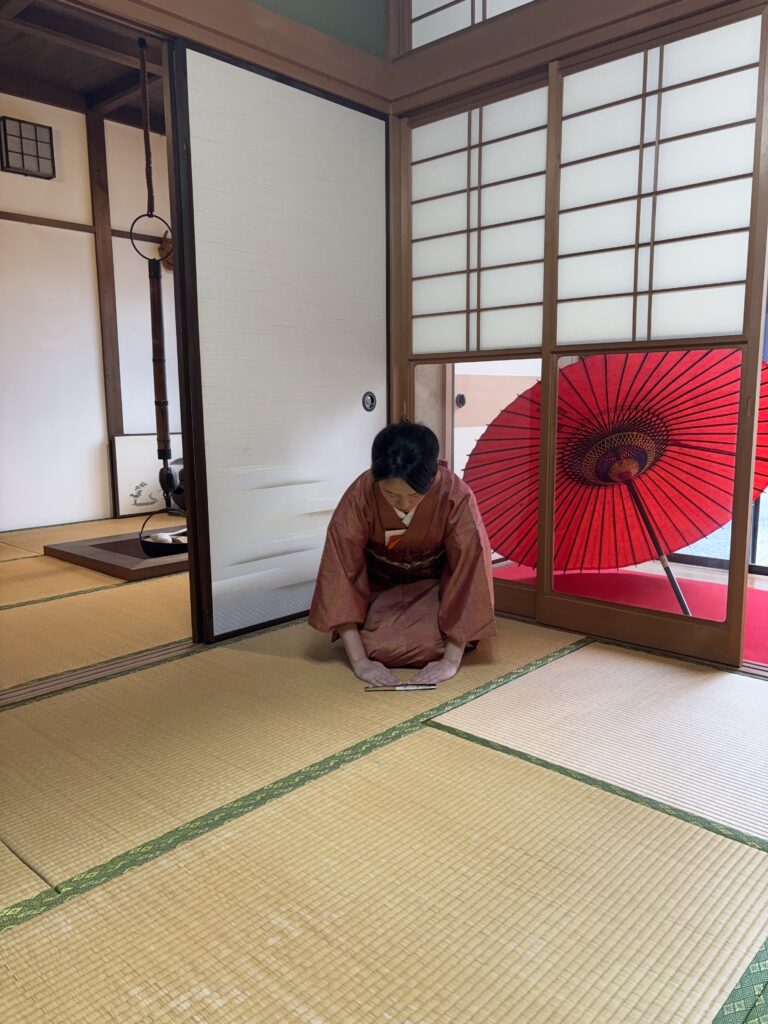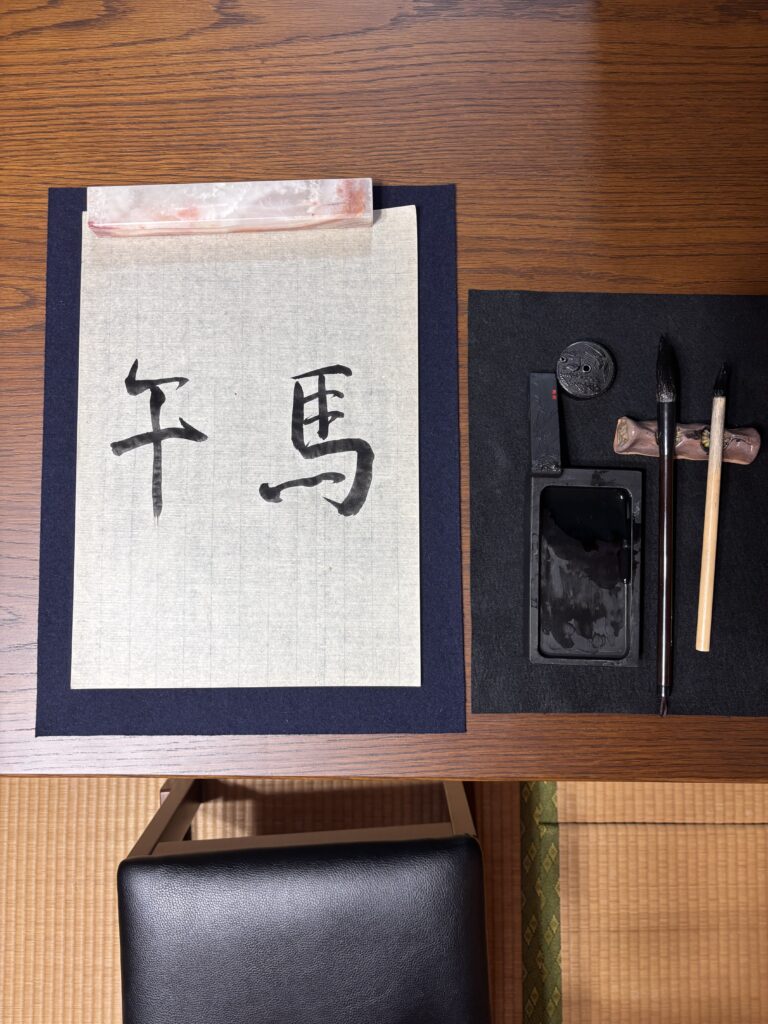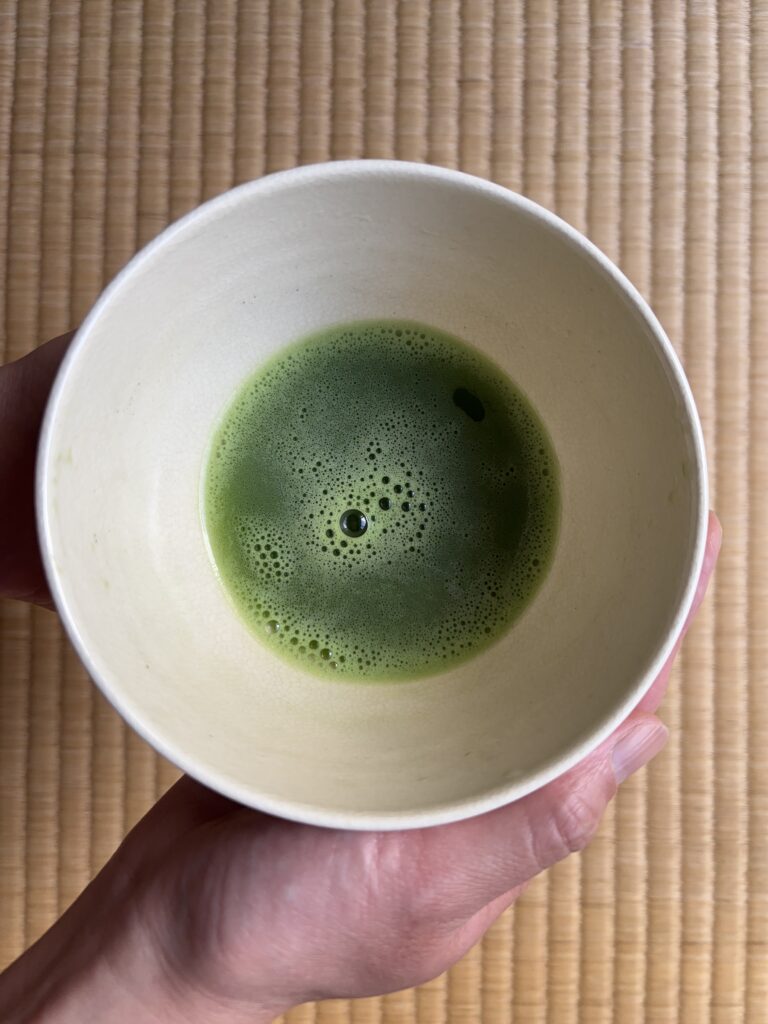Questions about Shodo, Japanese Calligraphy: How Many People Have Tried It?
When I ask our guests at our salon, “What percentage of people in Japan do you think have experienced calligraphy?” the answers vary widely — from just a few percent to about half.
In fact, nearly everyone in Japan who received their education between the ages of 8 and 15 has practiced Japanese calligraphy. This is because for seven of Japan’s nine compulsory school years, calligraphy is a required subject (according to the national curriculum guidelines).
Through these lessons, children learn to write legibly and efficiently, and to express themselves with characters suited to each situation — whether formal, decorative, or practical.
My own first calligraphy class was in the third grade of elementary school, just like children today. At that time, most subjects in Japanese public schools were taught by the homeroom teacher, but our calligraphy instructor was different — an elderly, strict man who only came to teach us calligraphy. I still remember how he sometimes digressed into stories about his favorite author, Shakespeare.
It was fun to dip the brush into the deep black ink and wrote large characters on white paper. Somehow, as we grow older, we stop making a mess. But when we were children, ink would get everywhere — on our hands, our clothes, sometimes even on our faces.
Calligraphy homework was a regular part of school life. Every winter holidays, we had to practice kakizome, the New Year’s calligraphy.
This tradition dates back to the samurai era, when children would write with the hope, “May my handwriting improve this year.”
Since I was a rather lazy child, I hated washing the brush afterward. No matter how many times I rinsed it, the black ink seemed endless.
In Tokyo, it’s especially cold around New Year’s, so washing the brush outside with freezing water was my least favorite part. I often gave up halfway — only to find it stiff as a hard pen the next time I needed it.
But those lazy days are long gone.
Now, at our salon, you don’t have to wash your brush in icy water in winter, nor under the blazing sun in summer. I’ve truly mended my ways. Now I wash every brush with great care and a fresh heart for you.
I imagine many people in Japan share similar memories of calligraphy.
If you ever visit Japan, try asking someone, “Have you ever practiced calligraphy, or Shodo?”
Almost all will say, “Yes!!”
References
・Japan’s National Curriculum Guidelines for Elementary and Junior High Schools (in Japanese)
